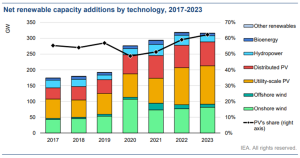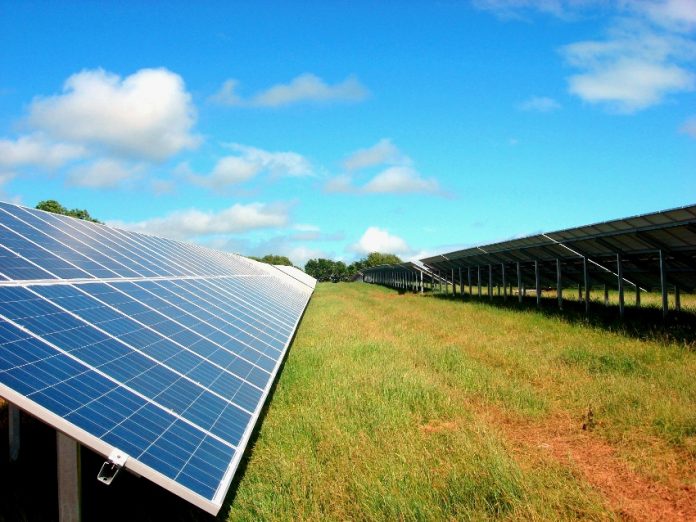The world added record amounts of renewable energy last year with 295GW of capacity deployed, up 6% year-on-year, despite supply chain constraints, project delays and high commodity prices, according to the International Energy Agency (IEA), which also expects nearly 320GW to be deployed this year.
While it is still “too early” to assess the impact of updated energy policies following Russia’s invasion of Ukraine on 2022 and 2023 forecasts, the current global energy crisis exacerbated by the war has added greater impetus to the clean energy transition, according to the IEA’s Renewable Energy Market Update 2022.
The report noted how solar PV and wind power have “the potential to reduce the European Union’s power sector dependence on Russian natural gas by 2023”. This is despite their costs expected to remaining high through to 2023 “due to elevated commodity and freight prices”, the IEA said, adding that their competitiveness improved when viewed against soaring natural gas and coal prices.
Pushing through the 300GW level for the first time, capacity additions this year are expected to be led by solar PV, which is predicted to account for 60% (190GW) of new capacity, up 25% year on year. BloombergNEF is expecting a substantially higher figure of roughly 245GW of solar PV, its head of solar analysis, Jenny Chase, recently told PV Tech.
Utility-scale projects will make up two thirds of capacity additions this year, the IEA said. It estimated that the overall investment costs of new utility-scale PV would be 15% to 25% higher than in 2020 due to elevated prices for freight, polysilicon and metals.
 Solar PV is expected to dominate the renewables landscape this year and next. Source: IEA
Solar PV is expected to dominate the renewables landscape this year and next. Source: IEA
It said that while 2022 capacity additions were predicted to jump 8% to almost 320GW this year under its old forecasts that did not account for new energy policies, 2023 additions are expected to “remain stable” unless new policies are implemented rapidly because “solar PV expansion cannot fully compensate for lower hydropower and steady year-on-year wind additions.”
The IEA said “strong policy support” in the China, the European Union (EU) and Latin America had caused its deployment forecasts for 2022 and 2023 to be upgraded in December despite downward forecast revisions in the US, where the solar industry is currently reeling from the Department of Commerce’s (DOC) decision to investigate anti-dumping and circumvention by Chinese manufacturers.
Although referencing “looming market uncertainties”, the IEA said the heightened focus on energy security in the EU was “triggering an unprecedented policy momentum towards accelerating energy efficiency and renewables”.
“Ultimately, the forecast of renewable markets for 2023 and beyond will depend on whether new and stronger policies will be introduced and implemented in the next six months,” it added.
The European Commission will this week set out plans to more than double the continent’s installed solar capacity by 2028, according to a draft of the bloc’s REPowerEU plan seen by PV Tech.






